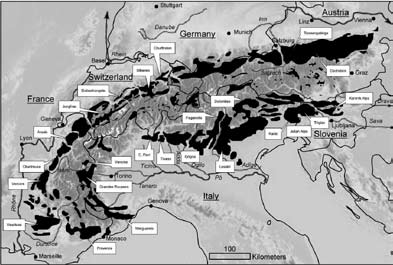Cave and Karst Evolution in the Alps and Their Relation to Paleoclimate and Paleotopography
DOI:
https://doi.org/10.3986/ac.v36i1.208Abstract
Progress in the understanding of cave genesis processes, as well as the intensive research carried out in the Alps during the last decades, permit to summarize the latest knowledge about Alpine caves. The phreatic parts of cave systems develop close to the karst water table, which depends on the spring position, which in turn is generally related to the valley bottom. Thus, caves are directly linked with the geomorphic evolution of the surface and reflect valley deepening. The sediments deposited in the caves help to reconstruct the morphologic succession and the paleoclimatic evolution. Moreover, they are the only means to date the caves and thus the landscape evolution. Caves appear as soon as there is an emersion of limestone from the sea and a water table gradient. Mesozoic and early tertiary paleokarsts within the alpine range prove of these ancient emersions. Hydrothermal karst seems to be more widespread than previously presumed. This is mostly due to the fact that usually, hydrothermal caves are later reused (and reshaped) by meteoric waters. Rock-ghost weathering is described as a new cave genesis agent. On the contrary, glaciers hinder cave genesis processes and fill caves. They mainly influence cave genesis indirectly by valley deepening and abrasion of the caprock. All present datings suggest that many alpine caves (excluding paleokarst) are of Pliocene or even Miocene age. Progress in dating methods (mainly the recent evolution with cosmogenic nuclides) should permit, in the near future, to date not only Pleistocene, but also Pliocene cave sediments absolutely.
Downloads

Downloads
Published
How to Cite
Issue
Section
License
Authors guarantee that the work is their own original creation and does not infringe any statutory or common-law copyright or any proprietary right of any third party. In case of claims by third parties, authors commit their self to defend the interests of the publisher, and shall cover any potential costs.
More in: Submission chapter




